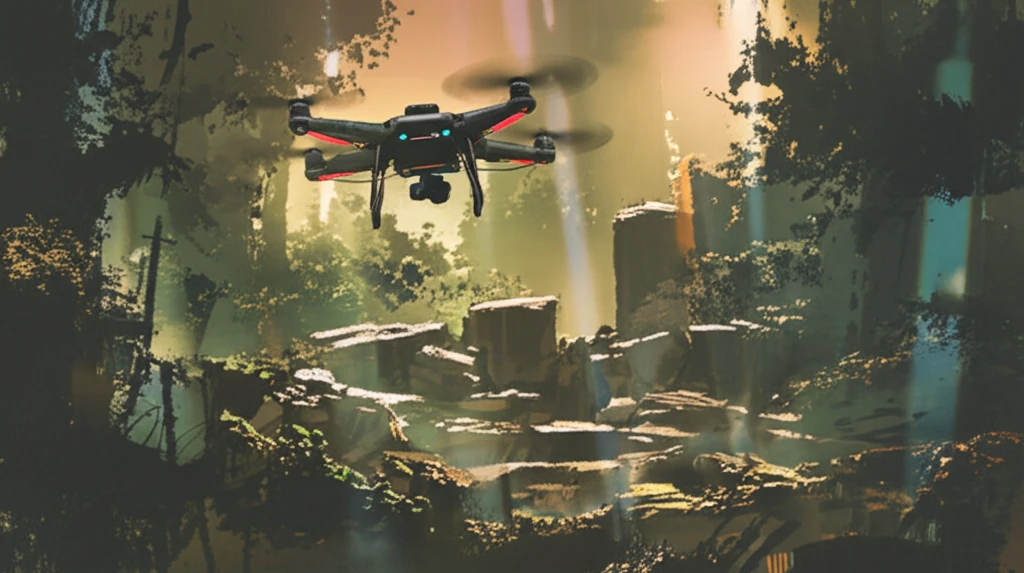
Drone Visionaries: Unveiling Hidden Worlds with Airborne Optical Sectioning
"A new frontier in remote sensing uses image-based rendering to see through dense foliage and discover concealed artifacts."
The use of drones has exploded across various sectors, from archeology to forestry, providing an efficient means of surveying landscapes, particularly small areas of up to several hundred square meters. Traditionally, techniques like LiDAR (light detection and ranging) and photogrammetry have been employed for 3D reconstruction, yet a new approach is emerging that promises to change how we perceive and analyze our world.
Enter Airborne Optical Sectioning (AOS), a radical method rooted in the concept of synthetic aperture imaging. Unlike traditional techniques that measure and render 3D point clouds or triangulated meshes, AOS leverages image-based rendering for 3D visualization. This innovative method bypasses the pitfalls of photogrammetry, such as inaccurate correspondence matches and prolonged processing times. Furthermore, AOS presents a cost-effective alternative to LiDAR, providing surface color information and the potential for high sampling resolutions.
AOS works by sampling the optical signal of wide synthetic apertures—ranging from 30 to 100 meters in diameter—using unstructured video images captured by a low-cost camera drone. This process supports optical sectioning through image integration, resulting in a shallow depth of field where out-of-focus occluders are strongly blurred, while points in focus remain sharply visible. By computationally shifting focus, AOS enables optical slicing through dense structures like forests, revealing concealed artifacts on the ground.
How Airborne Optical Sectioning Works: Seeing the Unseen

The core principle behind AOS lies in its ability to computationally integrate multiple images captured from different viewpoints to simulate a much larger lens. This 'synthetic aperture' allows for a drastically reduced depth of field. Think of it like focusing a camera very precisely—elements outside that focal plane blur significantly. In AOS, this blurring effect is strategically used to minimize the impact of obstructions like leaves and branches.
- Image Acquisition: A drone equipped with a standard camera captures video footage of the target area. The drone follows a carefully planned path to sample the synthetic aperture.
- Geo-Referencing: Each video frame is tagged with its precise location and orientation data.
- Image Rectification: The images are corrected for lens distortion.
- Synthetic Aperture Rendering: A virtual camera is created within the software. Its parameters (position, orientation, focus) can be adjusted interactively.
- Ray Integration: The software integrates rays of light from multiple images that intersect at a specific point on the virtual camera's focal plane. This integration process effectively simulates a large aperture lens.
- Focal Slicing (Optional): For non-flat surfaces, the focal plane can be adjusted to create a series of images with varying focus depths. These images are then combined to create a final image with a greater overall depth of field.
The Future of Seeing the Unseen
Airborne Optical Sectioning offers a compelling new approach to remote sensing, particularly in scenarios where traditional methods fall short. While it may not replace LiDAR entirely for applications requiring precise 3D measurements, AOS provides a cost-effective, visually intuitive way to explore partially hidden environments. As drone technology and image processing techniques continue to advance, AOS promises to become an increasingly valuable tool for archaeologists, environmental scientists, and anyone seeking to uncover the secrets hidden beneath the surface.
